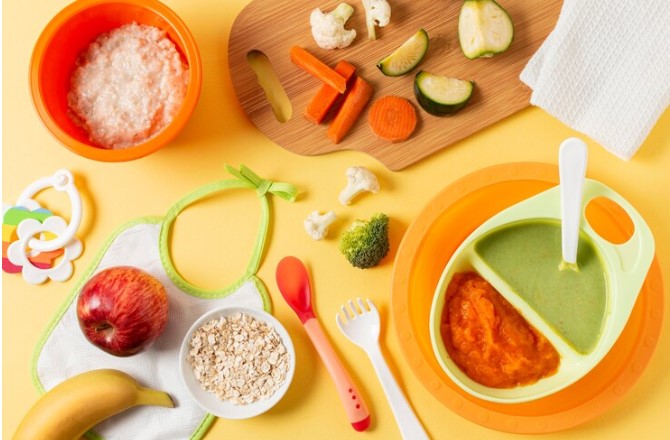Daily food calories are the foundation of your body’s energy supply, essential for powering everything from your brain function to physical activity. Every bite you take contributes to your daily caloric intake, influencing your weight, metabolism, and overall health. By understanding how many calories your body needs each day, you can make informed choices about your diet, helping you achieve specific health goals and maintain a balanced lifestyle.
What Are Daily Food Calories?
Daily food calories represent the energy provided by the food you consume throughout the day. Calories are essential because they fuel every bodily function, from breathing and digestion to physical activity. Understanding daily food calories helps ensure you meet your energy needs, maintain optimal health, and support your overall well-being.
How Calories Affect Your Body
Calories are measured units of energy derived from the macronutrients in your diet: carbohydrates, proteins, and fats. When you consume more calories than your body burns, the excess energy is stored as fat. Conversely, consuming fewer calories than you expend leads to weight loss. This balance of intake and expenditure directly impacts your weight and health.
The Role of Calories in Energy Balance
Energy balance is the equilibrium between the calories you consume and the calories you burn. Maintaining a stable weight requires a balanced energy intake and expenditure. Imbalances, whether positive or negative, can lead to weight gain or loss, influencing overall health and well-being.
How Many Daily Food Calories Should You Eat on Average?
Factors Influencing Daily Caloric Needs
Daily caloric needs vary based on several factors, including age, gender, weight, activity level, and overall health goals. Understanding these variables helps tailor your caloric intake to match your individual needs.
Age, Gender, and Weight
● Age: Metabolic rates tend to decrease with age, affecting daily caloric needs. Younger individuals typically require more calories for growth and development, while older adults may need fewer calories due to a slower metabolism.
● Gender: Men generally have higher caloric needs than women due to greater muscle mass and basal metabolic rate.
● Weight: Heavier individuals often require more calories to maintain their weight, as larger bodies burn more energy at rest.
Activity Level and Metabolism
● Activity Level: Sedentary individuals need fewer calories compared to those who are active or engage in regular exercise. Active people have higher energy needs to support their physical activity.
● Metabolism: A higher metabolic rate increases caloric needs, while a slower metabolism requires fewer calories. Factors influencing metabolism include muscle mass, genetics, and hormonal balance.
Health Goals: Weight Loss, Maintenance, or Gain
● Weight Loss: To lose weight, you must create a calorie deficit, consuming fewer calories than you burn.
● Maintenance: To maintain your current weight, your calorie intake should equal your calorie expenditure.
● Weight Gain: To gain weight, you need a calorie surplus, consuming more calories than you burn.
How Do I Calculate How Many Calories I Need?
Breaking Down Your Daily food calories Intake
Accurately determining your daily caloric needs involves understanding the distribution of calories across macronutrients and aligning them with your health goals.
Macronutrients: Carbohydrates, Proteins, and Fats
● Carbohydrates: Provide quick energy and should constitute a significant portion of your daily caloric intake.
● Proteins: Essential for muscle repair and growth, proteins also play a key role in maintaining satiety.
● Fats: Provide long-lasting energy and are crucial for hormonal balance and cell function.
Ideal daily food calories distribution for different goals
● Balanced Diet: A balanced diet typically involves a moderate distribution of calories among carbohydrates, proteins, and fats.
● Specialized Diets: Depending on your health goals, you may follow specialized diets like low-carb, high-protein, or balanced macronutrient plans.
Sample Caloric Distribution Plans
● For Weight Loss: Higher protein intake with moderate carbohydrates and fats.
● For Muscle Gain: Increased protein and carbohydrate intake with controlled fat levels.
● For Maintenance: Even distribution among macronutrients with adjustments based on activity level.
How to Track and Manage Daily Food Calories
Tools and Apps for Caloric Tracking
Several apps and tools are available to help you track your daily caloric intake accurately. Popular options include MyFitnessPal, Lose It!, and Cronometer, which provide detailed nutritional information and help monitor your progress.
Reading Nutrition Labels Effectively
Understanding nutrition labels is crucial for managing calorie intake. Look for information on serving size, total calories, and the breakdown of macronutrients to make informed food choices.
Practical Tips for Portion Control
● Use measuring cups and food scales to ensure accurate portion sizes.
● Be mindful of portion sizes when eating out, and consider splitting dishes or asking for smaller portions.
Healthy Eating Habits to Optimize Caloric Intake
Choosing Nutrient-Dense Foods
Opt for foods that provide a high nutrient-to-calorie ratio. Fruits, vegetables, lean proteins, and whole grains offer essential vitamins and minerals without excessive calories.
The Impact of Meal Timing and Frequency
● Meal Timing: Eating regular meals and snacks throughout the day can help maintain stable energy levels and prevent overeating.
● Frequency: Incorporate balanced meals and snacks to support metabolic health and manage hunger.
Avoiding Common Pitfalls and Myths
● Myth of Extreme Caloric Restriction: Severely restricting calories can slow metabolism and lead to nutrient deficiencies.
● Misconceptions About “Healthy” Foods: Even healthy foods can contribute to weight gain if consumed in excess.
How to Reduce Calorie Intake
● Substitute High-Calorie Ingredients: Replace high-calorie ingredients with lower-calorie alternatives, such as using Greek yogurt instead of sour cream.
● Increase Physical Activity: Incorporate more exercise to burn additional calories and support weight management.
● Be Mindful of Liquid Calories: Limit consumption of sugary drinks and alcohol, which can add significant calories without satisfying hunger.
Caloric Needs for Special Populations
Children and Adolescents
Children and adolescents require a balanced intake of calories to support growth and development. Nutritional needs vary with age, activity level, and developmental stages.
Pregnant and Lactating Women
Pregnant and lactating women have increased caloric and nutritional needs to support fetal development and milk production. A well-balanced diet with additional calories is essential for maternal and infant health.
Older Adults and Seniors
Older adults may experience changes in metabolism and appetite, affecting their caloric needs. Emphasis on nutrient-dense foods and appropriate calorie intake can help maintain health and vitality in later years.







